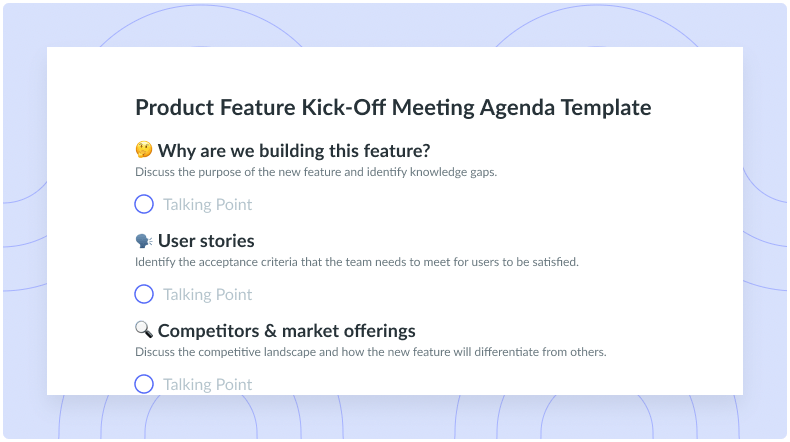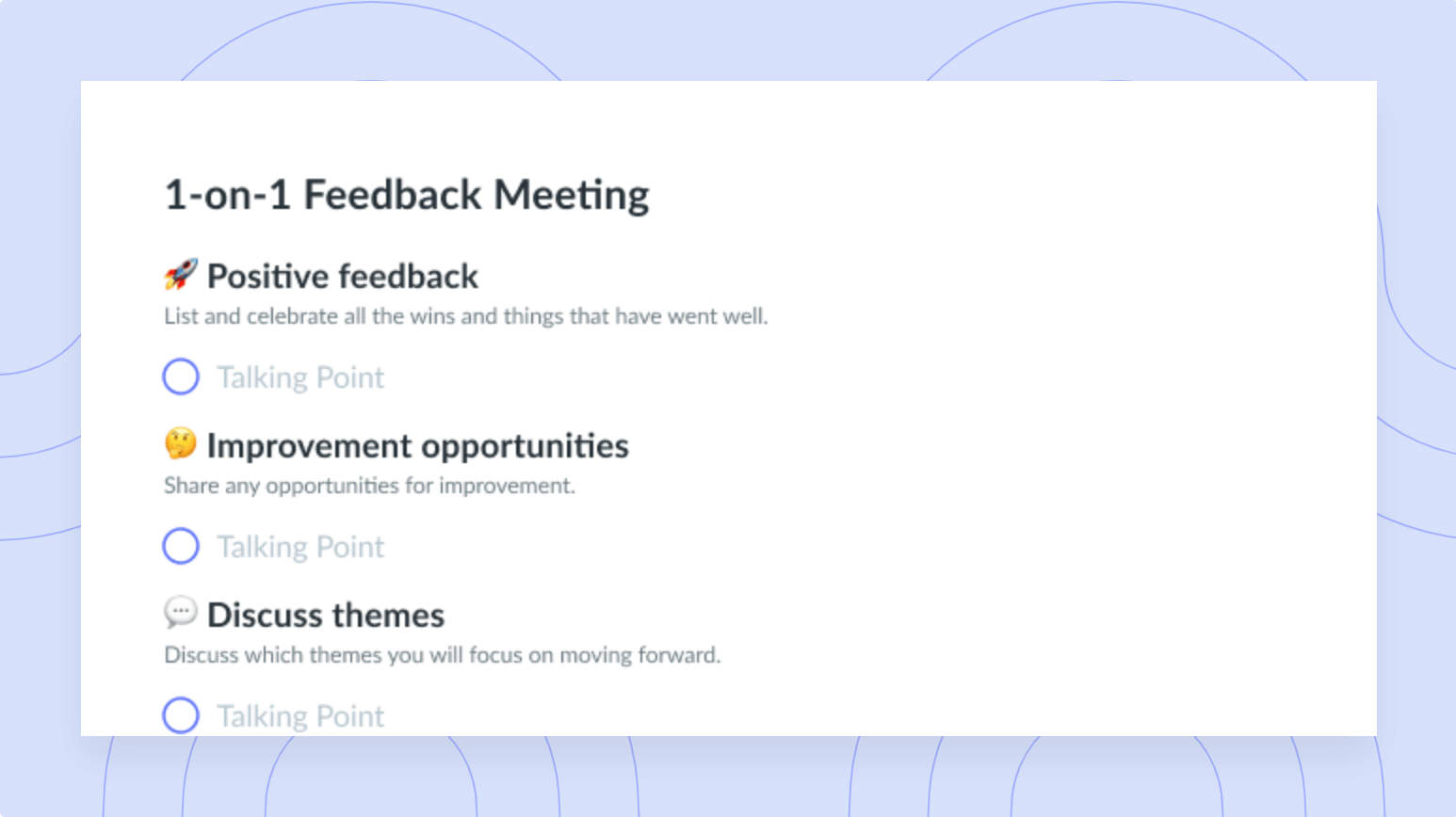9 Ways to Avoid Reactive Management
Proactive strategies you can implement today to mitigate risk and eliminate reactive management. Plus, get a free template!
Many managers and leaders fail to recognize the benefits of proactive versus reactive management. Instead, they proceed as usual and don’t take the time to identify potential issues or mitigate risks. If you’re always trying to pick up the pieces and put out fires the moment they arise, you’ll never be able to work effectively or calmly towards moving the needle. This type of chaotic environment may also hinder your teammates’ ability to do their best work. It’s for this reason that we recommend putting reactive management in the past.
- What is reactive management?
- Reactive management vs. proactive management
- Why you should avoid reactive management
- How to avoid reactive management
What is reactive management?
Reactive management is when leaders or managers react in the moment as opposed to waiting and crafting a more appropriate response. This kind of management usually occurs when a manager or leader hasn’t taken the time to plan ahead for problems or opportunities. As a result, they haven’t considered potential solutions and usually make something up on the fly—this can be because an organization hasn’t taken the time to anticipate problems or dive into risk management. Consequently, problems may arise out of the blue and potential solutions need to be explored in the moment as opposed to proactively.

Level up your management skills
Foster communication and collaboration in your one-on-ones by including an agenda everyone can contribute to. Try using a tool like Fellow!
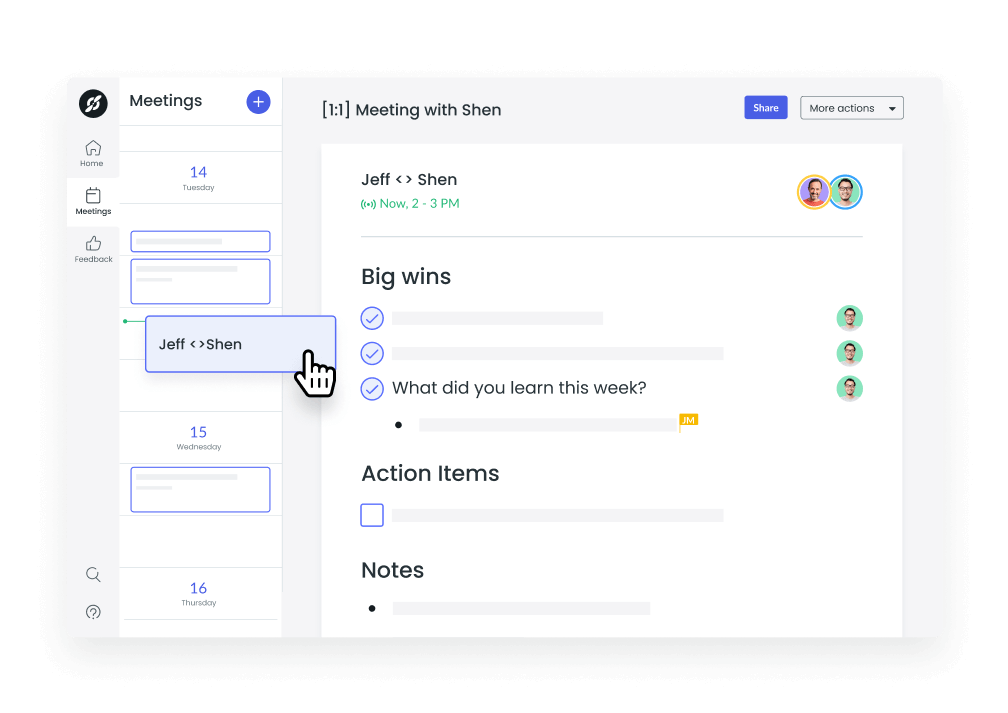
Reactive management vs. proactive management
On one hand, reactive management is when managers or leaders respond to issues as they arise. They haven’t taken the time to explore potential risks or work through strategies or solutions. On the other hand, proactive management is the exact opposite. Managers or leaders who practice proactive management take the time to anticipate needs or challenges before they arise so they can better prepare their teams to overcome them.
Why you should avoid reactive management
Practicing proactive management means that you’ll spend more time planning and preparing for the future than you will dealing with emergencies. When you choose to practice reactive management, you haven’t taken the time to mitigate or anticipate risks, so you’re constantly putting out fires after the damage has already been done. If you’re constantly reacting in the moment and failing to be proactive, your team will be in a constant state of turmoil.
Reactive action only occurs after the error has occurred. Avoiding reactive management is key if you want your team to thrive and work to the best of their abilities—opt for proactive management instead. Remember, prevention is always better than a cure or a quick fix.
How to avoid reactive management
- Hold one-on-ones
- Schedule time for yourself
- Time block
- Leave your computer in your office when you aren’t working
- Delegate tasks
- Develop self-awareness
- Write down priorities
- Track task and goal progress
- Ask for feedback
1Hold one-on-ones
One-on-one meetings are one of the most misunderstood and underutilized tools amongst leaders. Hosting frequent one-on-ones is a great way to build and strengthen working relationships. These meetings are also great for having open and honest conversations with your colleagues or employees where each one of you can take the time to give and receive feedback. You can use this time to discuss wins, failures, or potential blockers that may be getting in the way of progress.
One-on-one meetings are also a great opportunity to discuss any potential issues before they turn into a full-blown problem, meaning you’re able to anticipate problems and provide proactive solutions as opposed to always being reactive. Using a meeting template will ensure your next one-on-one runs smoothly and efficiently so you can get to the root of any blockers before they pose a real threat.
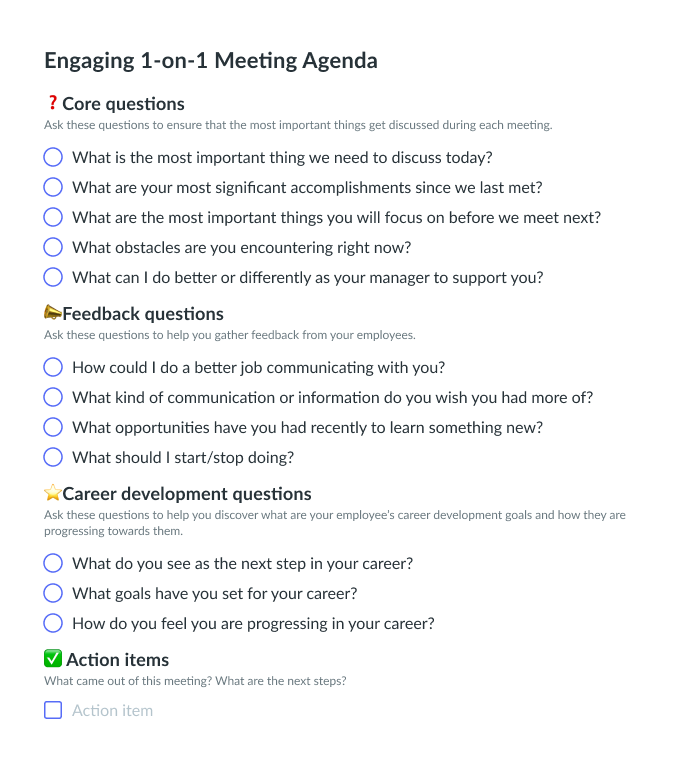
2Schedule time for yourself
Alone time is important for a variety of reasons. If you don’t schedule time for yourself, you won’t be able to prioritize reflection or growth. Taking time for yourself is the perfect opportunity to hone in on personal development. If you’re constantly on edge and prioritizing everything and everyone but yourself, you’ll eventually combust and won’t be able to react proactively. Instead, you’ll constantly be running on empty and trying to put out fires the moment they arise.
3Time block
Time blocking is a time management method that doubles as an excellent productivity tool. When done correctly, time blocking helps individuals organize their workdays in specific blocks that focus on different tasks and responsibilities. Each time block is dedicated to completing a specific task and is designed to help you stay focused and on track.
Rather than working from an open-ended to-do list, use time blocking to dedicate time to specific tasks. Take emails for example. Blocking off an allotted amount of time to check your emails will ensure you’re able to clear out your inbox without distraction. It also means that if something arises, you’ll be able to give yourself time to craft an appropriate response.
4Leave your computer in your office when you aren’t working
Everybody needs time to recharge, even managers. If you’re constantly on high alert and take your work with you wherever you go, you may be more prone to being reactive and feeling as though you need to solve every problem that arises on the fly.
5Delegate tasks
No matter your level of expertise or your role, you’ll always reach a point where it becomes impossible to do everything on your own. Delegation is an extremely important skill that you should master. Having teammates you can count on not only demonstrates their competence and willingness to step up in a time of need, but it also means you’ve done your job as a leader and equipped them with the skills they need to excel. Delegating is a great opportunity to demonstrate your trust while simultaneously helping your teammates develop their skills through new opportunities.
6Develop self-awareness
Self-awareness is important in every aspect of life, and work is no exception. Being self-aware means you have a sound understanding of who you are as a person and how you relate to the world around you. People who are self-aware understand their strengths and weaknesses and know how to manage them in the workplace. In addition, leaders who are self-aware know what they bring to their role and are able to better perform as a result.
7Write down priorities
As a manager or leader within your organization, you most likely have a plethora of competing demands. Your day-to-day is probably really busy, and you may forget key priorities as a result. The reality of the situation is that our brains aren’t storage systems, so it’s nearly impossible to remember everything if you don’t take the time to write it down.
If you notice yourself forgetting things or forgoing important details, you may want to consider using Streams. Streams are digital notepads by Fellow that you can leverage on your own or with teammates to capture ideas, goals, or whatever else you may need to reference later.
8Track task and goal progress
Objectives and key results (OKRs) are typically defined as ambitious goals that need time and a great deal of focus to be achieved. For that reason, it’s important to catch at-risk goals early while there’s still time to fix them. If you only review your OKRs sporadically, at-risk objectives can easily go unnoticed and you won’t be able to react proactively.
Luckily, tools like Fellow make it easier than ever to track goals and progress. This tool makes it possible for you to link your objectives to team meetings so you can easily review progress, resolve challenges, and keep all OKRs on track.
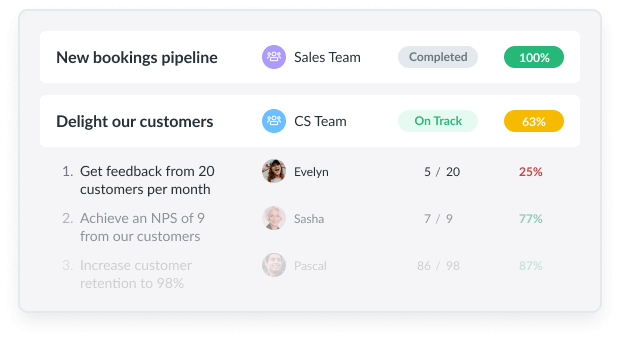
9Ask for feedback
A healthy, strong culture starts with feedback. Fellow makes it easier than ever to share real-time feedback on meetings, projects, and performance. In addition to helping create a thriving environment, giving and receiving feedback also helps strengthen relationships and improve performance. If you want your teammates to thrive, you need to create a company culture that values giving and receiving feedback.
With Fellow, you can incorporate feedback into your team’s day-to-day experience and track progress over time. Incorporating feedback into your day-to-day via Fellow will also help you unroot any potential issues before they turn into full-blown problems so you’re able to provide proactive solutions.

Are you ready to put reactive management in the past?
The benefits of proactive management as compared to reactive management are bountiful. As a manager or leader, it’s extremely important that you learn how to become proactive as opposed to reactive. Being a proactive leader means anticipating problems or needs and creating a game plan that eliminates these risks and provides well-thought-out solutions.
Being under pressure, feeling a strong sense of urgency, or working from an out-of-control environment or workplace are all factors that may lead to reactive management. Luckily, the tips, tricks, and best practices outlined in this article will provide you with everything you need to practice proactive strategies!


![12 Thoughtful Ways to Support Your Team [+ Free Template]](https://fellow.app/wp-content/uploads/2022/04/Ways-to-support-your-team-2.jpg)







